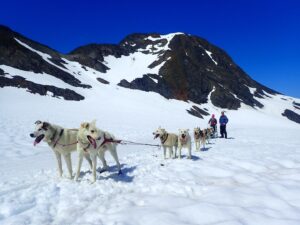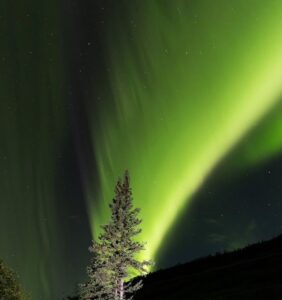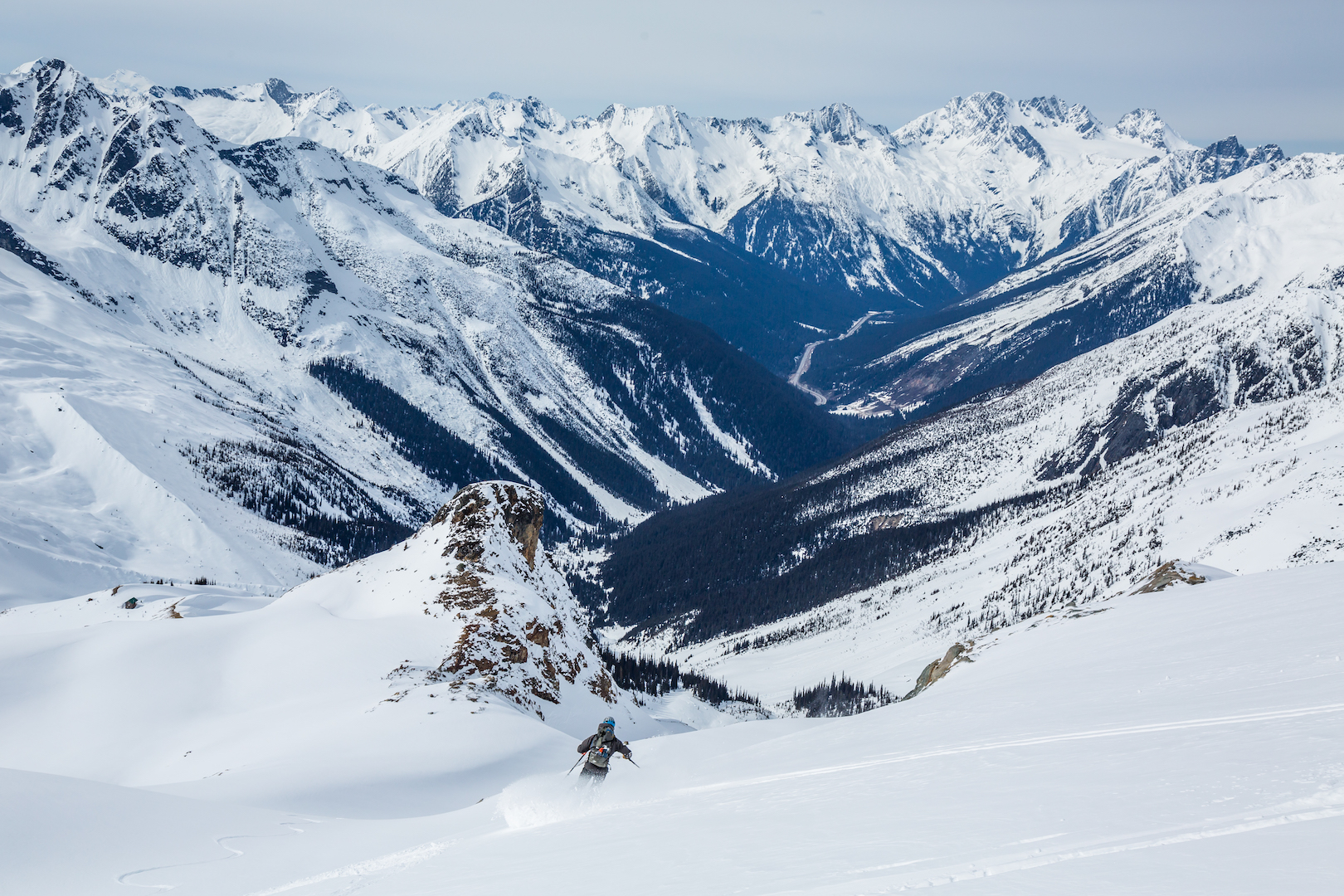Winter in Alaska
Winters in Alaska provide the perfect conditions for many wintertime outdoor activities, but you better move fast, because there isn’t much daylight to play in. Some areas have very mild winters like Southeastern Alaska, while others have brutally cold temperatures, like in the Far North. Weather in Alaska is always quick to change. Make sure to be up to date on forecasts in the areas you will be visiting.

Sled dogs wait at the ready on a snowfield
Winter Exploration
Winter biking, cross-country skiing, ice fishing, dog sledding, snowshoeing, and snowmobiling are just a few of the activities that are available in the Anchorage and up to the Denali area. If you are well prepared, winter camping can be an enjoyable experience. Many lodges and resorts provide amenities so as to offer some more of the creature comforts.
Considering the Hazards
Winters in Alaska are also a time to take extra precautions. Cold temperature, short days, and unique situations like overflows can be uncomfortable or deadly. Water laying on top of ice and under snow (overflows) cannot be seen and is a trap for snow machines, dog sled mushers, and anyone who ventures on the ice can quickly be overcome with icy cold wet boots, leading to hypothermia and exhaustion.

The greens and purples of the Aurora Borealis in Nome
An Alaskan Experience
Winters in Alaska are a great time to see the wilds in the care of professional guides. Services are available to fly you in comfort to sightsee the mountains, valleys, and up the glaciers. Additionally, resort skiing and heli-skiing are becoming a more popular destination for those visiting for winter in Alaska. There are opportunities to speed across snowfields by dogsled tour and there are snowmobiling tours as well.
Another Alaskan phenomenon is the chance to view the Aurora Borealis. Many different sources have the ability to generate very accurate sighting projections and prepare you for the best time to see the lights. The farther away from the sources of human light pollution, the better. Winter’s darkness is most conducive to watching the Northern Lights. Even though the upper atmospheric event occurs year round, the advancing daylight of the other seasons wash out the viewing opportunities.

